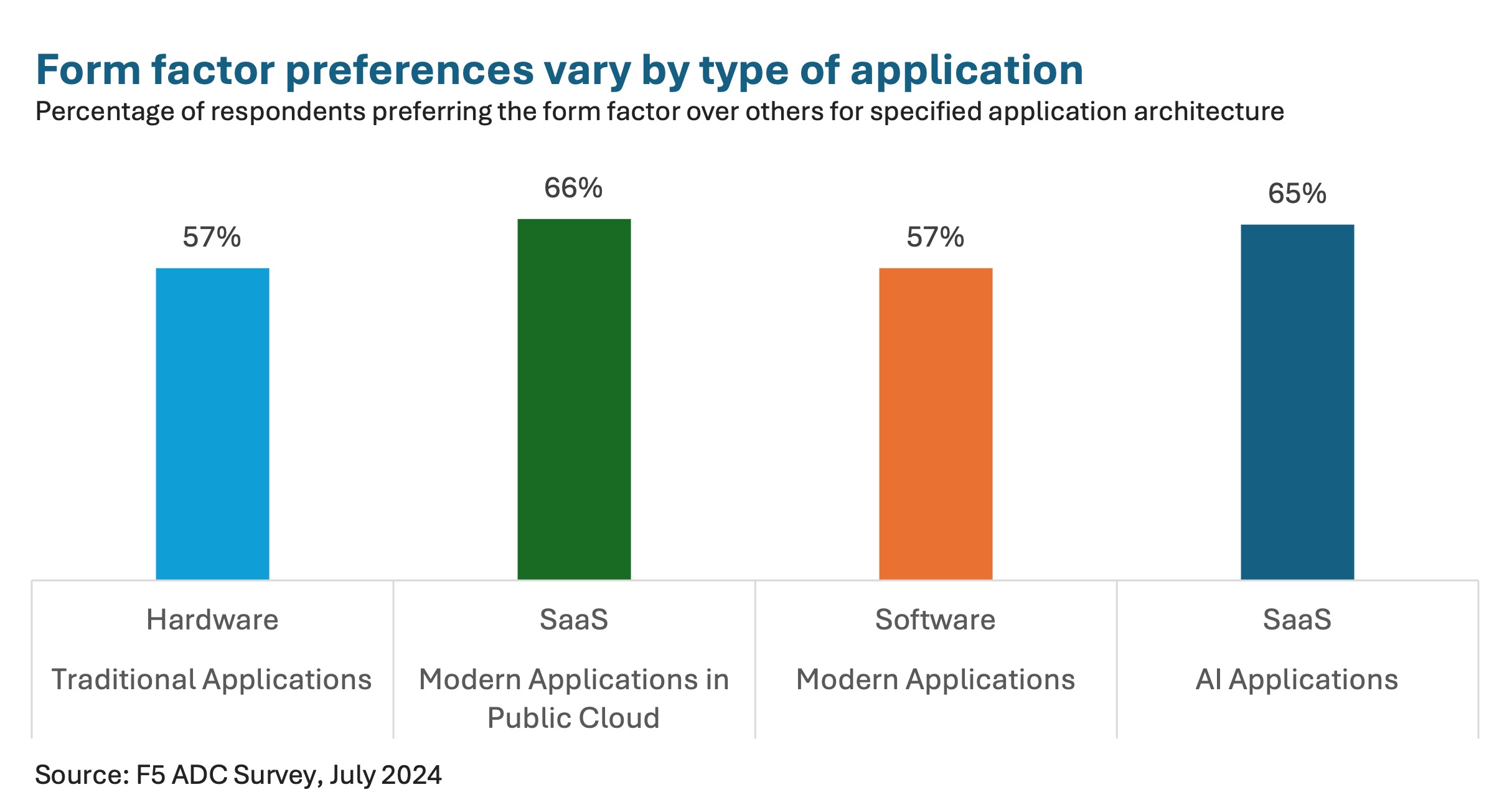Hybride : L'avenir de la distribution et de la sécurité des applications
Il n’existe pas de solution unique pour la distribution et la sécurité des applications. C’est ce que révèle notre dernière étude.
À l’époque de l’histoire d’Internet, lorsque j’étais encore une petite fille, l’ensemble du secteur de la distribution et de la sécurité des applications reposait sur le matériel. Lorsque le cloud computing a commencé à exploser, l’attention s’est déplacée vers les logiciels. Les machines virtuelles sont devenues le nouveau facteur de forme et, peu de temps après, les conteneurs !
La numérisation rapide a poussé l’industrie vers le SaaS, en mettant l’accent sur la fourniture de services qui s’étendent non seulement sur plusieurs sites, mais atteignent également un public mondial.
Chaque nouvelle génération de distribution d'applications et de sécurité ne prenait généralement en charge que le dernier facteur de forme au moment de son lancement. Et certaines générations n’ont jamais évolué pour prendre en charge des facteurs de forme plus récents. Le marché se retrouve alors avec un ensemble d’options qui ne prennent généralement en charge qu’un sous-ensemble de tous les facteurs de forme possibles disponibles.
Le problème avec cela est qu’il n’existe pas de solution unique pour tout ce qui concerne l’entreprise.
L'informatique hybride signifie tout hybride
Toutes nos recherches depuis dix ans , qu’elles soient générales ou ciblées, continuent de nous dire la même chose. Les organisations sont hybrides, à l’intérieur comme à l’extérieur . Leurs portefeuilles d’applications sont hybrides, leurs parcs informatiques sont hybrides. Tout est hybride, y compris la livraison des applications et les exigences de sécurité.
Dans un projet de recherche récent, nous avons posé des questions très spécifiques sur la fourniture d'applications et les services de sécurité, par exemple où, dans les architectures d'applications, ils les ont déployés et sous quel format ils les ont préférés.
Les résultats sont clairs : les organisations sont toujours principalement amenées à choisir tout, de l'emplacement à la fourniture d'applications et à la sécurité en fonction de l'application, ce qui entraîne le besoin d'une combinaison de matériel, de logiciels et de services de fourniture et de sécurité SaaS.
Les applications traditionnelles sont plus susceptibles d’être situées sur site et d’exploiter un facteur de forme matériel pour la distribution et la sécurité des applications. De même, les applications modernes génèrent une demande pour un format logiciel (machine virtuelle ou conteneurs, et parfois les deux) dans tous les emplacements. Lorsque ces applications modernes sont dans un cloud, les organisations se tournent vers les options SaaS.
Et les architectures d’applications d’IA émergentes ? Ils s'orientent vers une livraison et une sécurité basées sur le SaaS .

Cela est vrai quel que soit le point d’insertion des services de livraison et de sécurité dans ces architectures d’application. Qu'il s'agisse du nord-sud, de l'est-ouest ou de l'un des points d'insertion émergents du nouveau complexe de calcul de l'IA, les organisations utilisent clairement le type d'application pour prendre des décisions concernant le facteur de forme qu'elles utiliseront pour répondre aux besoins d'évolutivité, de performance et de sécurité de cette application.
De plus, nos recherches indiquent que cela est vrai quel que soit le service de livraison et de sécurité déployé. Nous avons posé des questions sur les préférences en matière de facteur de forme pour une douzaine de services de livraison et de sécurité différents et les résultats étaient les mêmes. Sécurité des API pour les applications modernes ? Logiciel. Des passerelles IA pour des applications IA ? SaaS, s'il vous plaît. Un service pour les applications traditionnelles ? Ils veulent du matériel.
Y a-t-il des exceptions ? Bien sûr. Mais dans l’ensemble, la tendance est claire : le portefeuille de fourniture d’applications et de sécurité des entreprises sera aussi hybride que leurs portefeuilles d’applications. Et même si les applications modernes ont finalement atteint un point d’inflexion et représentent 50 % des portefeuilles, il faudra un certain temps avant que les applications traditionnelles ne disparaissent, si jamais elles disparaissent. Et bien sûr, les applications de l’IA ne feront que croître à partir de maintenant. Ce qui signifie que les organisations utiliseront un mélange de matériel, de logiciels et de SaaS pour fournir et sécuriser leurs applications dans un avenir prévisible.
Alors, si vous vous êtes déjà demandé pourquoi F5 conserve les trois options pour ses offres de distribution d'applications et de sécurité ( matériel , logiciel et service ), vous le savez maintenant. Parce que les clients les veulent et en ont besoin pour livrer et sécuriser leurs portefeuilles d’applications hétérogènes.
